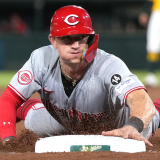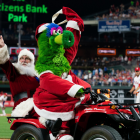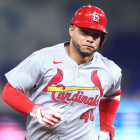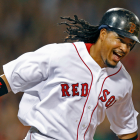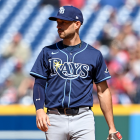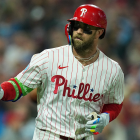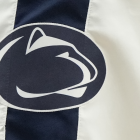Prospect Watch: Checking in on top prospects for each National League team after first month of 2024 season
How are the best prospects in the NL faring this year?
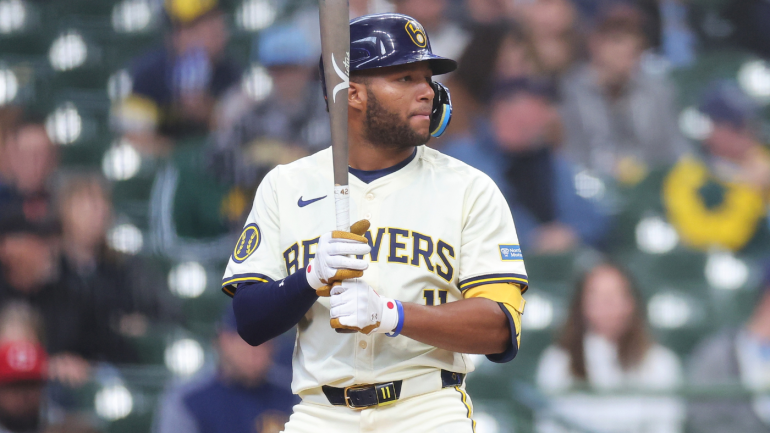
The Minor League Baseball season is now more than a month old. As such, it's about time that we get back to evaluating and analyzing what's happening with farm systems across the land. In other words, it's time for Prospect Watch to return.
For those new to the Prospect Watch feature, we run it on the first two Fridays of each month. One piece focuses on the National League, the other on the American League. We almost always have a single theme. Take this edition of Prospect Watch, where we'll be checking in on how each NL club's No. 1 prospect has fared thus far this season. (Do note that we're going off our offseason rankings; not all of these players would necessarily be their team's top prospect if we ranked them again now.)
Simple enough, right? Now, let's get to the good stuff.
| SS Jordan Lawlar: Lawlar hasn't yet played this season. He required surgery ahead of Opening Day after rupturing a ligament in this thumb. He's not expected back until later this summer. If Lawlar were hearty and hale, he would have likely served as Arizona's starting shortstop during Geraldo Perdomo's absence. (Perdomo tore his meniscus a week into the campaign, forcing the D-backs to split shortstop duties between rookie Blaze Alexander and veteran Kevin Newman.) Lawlar had a rough introduction to the majors last season, but we're confident that his feel for the position and the strike zone will enable him to have a long career. | |
| RHP Hurston Waldrep: Waldrep was a personal favorite in last year's draft. He'd struck out nearly 14 batters per nine innings at Florida thanks to a dynamite arsenal that included a trapdoor splitter. He slipped to the end of the first round because of one teensy-weensy little blemish in his game: bad command. Waldrep has continued to hand out free passes at a concerning rate (he walked 10 batters in his first 19 Double-A innings) suggesting that his sloppy geography remains an issue. If the Braves can get him around the zone more often -- clearly no sure thing -- he could become Atlanta's version of Dylan Cease. | |
| CF Pete Crow-Armstrong: Fortunes can change in a hurry in this game. Need evidence? Consider that Crow-Armstrong was off to a poor start at Triple-A. You wouldn't know it based on his first week back in the majors. The Cubs promoted Crow-Armstrong after losing Cody Bellinger to fractured ribs, and PCA delivered by notching five hits and four RBI in his first 17 trips to the plate. The real draw here remains his spectacular defense. | |
| 3B Noelvi Marte: We've long liked Marte because of his strength and feel for contact. Alas, he was suspended for 80 games back in March after he tested positive for a banned substance. Marte won't be eligible to return until late June. Check back then. | |
| SS Adael Amador: Amador has produced at a below-average clip over his first 16 games at Double-A. He's done so while leaning even more into his singles and walks formula. To wit, Amador recorded just one extra-base hit in his first 72 plate appearances. Meanwhile, he walked seven more times than he struck out and he hit more than 67% of his batted balls into the earth. It's an odd, throwback profile. One that, should these results stick, will need some tweaking. | |
| C Dalton Rushing: Rushing has gotten off to a good start at Double-A, hitting for average and power and even cutting into his strikeout rate. The big question facing him remains where does he play at the big-league level -- or, perhaps more likely, who does he play for? The Dodgers signed incumbent catcher Will Smith to a decade-long extension earlier this spring, making it tough to envision Rushing becoming their most-days backstop anytime soon. That's too bad, because he could be big-league ready by season's end. | |
| RHP Noble Meyer: The good news is that Meyer is young and that no one will remember these four starts if he develops as the Marlins hope. The bad news is that he's had some clunkers to begin the year. Meyer walked 13 batters in his first 14 innings, missing high and to the arm side a lot with his low-to-mid 90s sinker. Here's hoping, for his sake, that better days await. | |
| RF Jackson Chourio: Despite signing Chourio to an historic extension over the winter, we wondered if the Brewers would farm him out to begin the year so that he could work on his approach. They didn't, but they might have to soon. A month in, he's sporting a hideous strikeout-to-walk ratio fueled by entirely too many chases and too many whiffs. Chourio is only 20 years old and we're not going to give up on someone with this kind of power-speed upside. Still, at a certain point the Brewers will have to grapple with how long they can keep him in the lineup without harming his development or their own competitive aspirations. | |
| MIF Luisangel Acuña: Acuña, the return for Max Scherzer, has not performed well since joining the Mets last deadline. The Mets pushed him to Triple-A despite an uninspiring finish to last season. They haven't been rewarded for their belief in him. Instead, he's seen his walk and strikeout rates veer in the wrong direction. He's not hitting the ball hard at all when he has the platoon advantage, and he's been awfully prone to swinging and missing when he doesn't. We can only hope that Acuña starts to turn it around soon. Otherwise, last winter's ranking will serve as the pinnacle of his Mets career. | |
| RHP Andrew Painter: Painter has not pitched in a regular-season contest since 2022, and he's not expected to return from last summer's Tommy John surgery until 2025. We still believe in his ability, but it's going to require patience to see it out. | |
| RHP Paul Skenes: You're probably tired of reading about Skenes at this point so we'll keep it brief. He's continued to dominate Triple-A competition with a power arsenal that includes a 100 mph fastball, a swing-and-miss slider, and a new mid-90s sinker. The Pirates have erred on the side of caution with Skenes' workload, but even they can't drag this out for much longer. Our guess is that it's now a matter of days -- maybe weeks -- before he gets the call. | |
| C Ethan Salas: One of the questions we had entering the season was whether or not Salas would debut this year, in the process becoming MLB's first teenage backstop since Iván Rodríguez in 1991. Salas' so-so performance at High-A to open the year has caused us to pump the brakes -- or, at least, to remember that he won't celebrate his 18th birthday until June. We still think he'll achieve that feat -- he has two more years to do it, after all -- it just might not happen as soon as we thought was possible. | |
| LHP Kyle Harrison: Harrison has spent the season in the big-league rotation, racking up a 4.09 ERA and a 6.20 strikeout-to-walk ratio in his first six starts. He still has good stuff, and he's thrown way more strikes than you would've reasonably expected from someone who walked nearly five batters per nine innings during his minor-league days. | |
| SS Masyn Winn: We stuck by Winn after a rough introduction to the majors. It's a good thing we did. He's upped his output something fierce to begin this season, and he's done it while both hitting the ball harder and more frequently. Winn could use some work on his defense, particularly balls that require him to range to his right. Almost everything else here is pointing in a positive direction, however. | |
| OF Dylan Crews: Crews was widely considered the best prospect heading into last summer's draft class thanks to a polished offensive game and an extensive track record against SEC pitching. Unfortunately, he hasn't performed up to par. Crews has struck out more than 31% of the time in his first 11 Double-A games -- and that's despite a middle-to-opposite-field approach. He also missed some action because of a hamstring injury. Crews has too much talent to continue struggling for much longer, but it's probably fair to write that this is not what the Nationals envisioned on draft night. | |



















